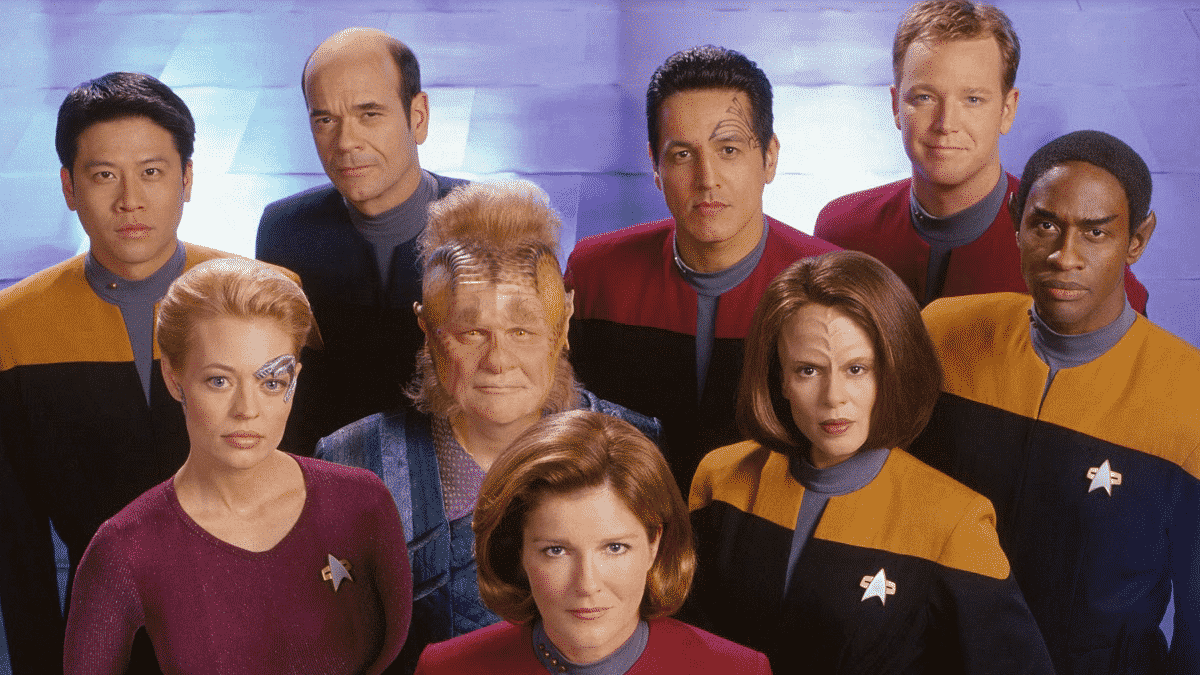Copyright in Pop Culture: Star Trek: Voyager
The Doctor is in... and he's writing a novel...
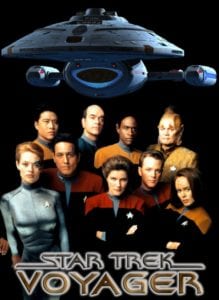
Since April 2016 I’ve been doing a series on Plagiarism in Pop Culture, looking at TV shows, movies and other media that used plagiarism as a plot point. The goal has been to examine how the media portrays and talk about plagiarism.
However, last week I shared an article about Copyright and Artificial Intelligence looking at the complications that artificial intelligence is bringing to copyright and the challenges we may face when machines, not people, are creating the bulk of our works.
However, as a serious Star Trek fan, I realized that the conversation wouldn’t be complete without an examination of episode 20 of season 7 of Star Trek: Voyager, entitled Author, Author. The episode involves an artificial intelligence writing a creative work and then having to fight to retain control over it as his infringers believe he doesn’t qualify copyright protection.
It’s a rare mix of science fiction, legal wrangling and debates over humanity that could only come from the latter episodes of Star Trek: Voyager. However, as we slide into more and more autonomous artificial intelligence, it may not be long before we have our own story like this one to ponder.
So, without further ado, let’s take a look at how Star Trek: Voyager handled the question of copyright and artificial intelligence.
Content Warning: Spoilers for Season 7, Episode 20 of Star Trek: Voyager (Author, Author).
The Plot
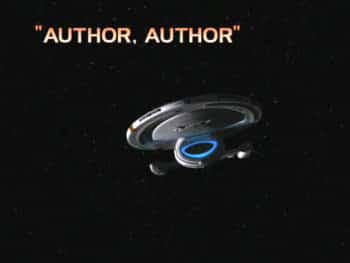
The episode takes place at the very end of the run of Star Trek: Voyager, literally the sixth-to-last episode in the long-running series according to IMDB. By this point in the story the ship, which had been more or less alone in the delta quadrant for years, had managed to establish limited communications with earth and members of the crew were having their first contact with their loved ones in years.
One of those members of the crew was The Doctor (also known as EMH Mark 1). The Doctor is a emergency medical hologram (EMH) that took over as the ship’s doctor after the original chief medical officer was killed in the show’s pilot. Though originally intended to be a short-term stopgap, he has been the ship’s physician for years and is now seen mostly as a part of the crew, despite being an artificial intelligence.
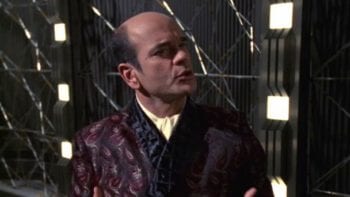
However, since The Doctor has no family on earth, he spends his limited time speaking with his publisher. It’s revealed that he has written a Holonovel (a novel meant to be played out on a Holodeck) entitled Photons Be Free that is a fictionalized account of his experiences on Voyager.
The Doctor enlists the aid of Lt. Tom Paris to help him tweak the novel but, when Lt. Paris plays it, he’s surprised to discover that, while it is fictional, all of the characters are very similar to their real-life counterparts with only minor changes.
Lt. Paris fears that this will lead to embarrassment of the crew and tries to alert the others that are in the novel. They initially accuse him of overreacting but are eventually coaxed into trying out the story and eventually agree.
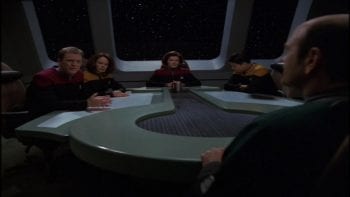
This leads to a confrontation between The Doctor and the senior staff but The Doctor holds his ground and refuses to change his story. However, when he goes to work on his story later, he discovers that Lt. Paris switched his holonovel with one of his creation that is equally embarrassing for him.
Eventually, The Doctor realizes he needs to change the novel and gets the publisher to agree to give him more time. However, it’s discovered shortly later that the publisher has gone ahead and released the rough draft of the novel without The Doctor’s permission.
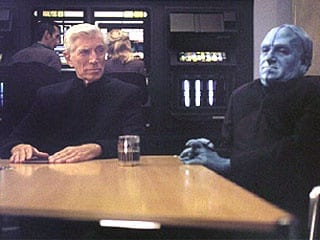
The reasoning that the publisher gives is that, since The Doctor is not a person, he has no rights to the work. The crew begins to concoct other legal theories on how to block the novel including defamation or leaking classified information, but they eventually settle on holding a Federation tribunal to determine The Doctor’s personhood.
After much wrangling over several days (due to the limited communication time) the arbiter reaches a decision. Though he refuses to classify The Doctor as a person, he says that he meets the legal definition of “artist” and thus has full rights to the work.
Despite the victory, The Doctor looks at it as being too little, too late. According to him, the work was already out in the wild and had already been seen by thousands. He felt the damage was done.
The show ends with a short scene set on a mining colony made up of EMH Mark I’s. There, the units are sharing the novel claiming it to be “quite provocative.”
Understanding the Copyright Issues

The biggest challenge in trying to analyze this story is that it’s set in the year 2378. Given that we’ve had two major rewrites of copyright law just in the last 110 years, not counting the various additions and other changes, it’s very difficult to say what copyright law might look like more than 250 years in the future (especially after meeting other advanced species).
Still, there are a few things we can assume. First is that copyright law exists in this universe. Second, that it is still authorship-based. Third, that they still content non-humans, or rather non-persons, cannot hold copyright.
Given those three things, the story is an interesting one. The Doctor, when Voyager was launched, was at the pinnacle of AI technology for the Federation. Though EMHs created since are, supposedly, more advanced, The Doctor has been in consistent operation for years at this and has been growing, learning and adapting the whole time. This is something an EMH was never intended to do.
But does that make the doctor a person? That’s a much thornier question but the arbiter in the episode rules on that saying no, or that at least he isn’t comfortable calling him as such based on the evidence available.
If we take the arbiter’s word, there’s a serious problem with the conclusion of this episode. The question of whether the doctor is an “artist” isn’t a pertinent question. While that might address whether he’s capable of creating a creative work, the issue is whether The Doctor can legally hold the copyright to the work and they seem to make it clear that non-persons cannot.
It’s possible, perhaps even likely, that humans redefined copyright and who can hold it after encountering advanced alien species. After all, our current standard of only humans being able to hold copyright seems rather backwards when confronted by Vulcans, Romulans, Klingons and other species of at least equal intellect and creativity. It may well be that copyright can be held by non-person “artists” though it seems like the shift from “human” to “person” already addresses the introduction of other species.
The arbiter’s ruling raises serious questions. If the monkey selfie case happened in 2378, would it have gone different? What about elephants, pigs and other animals that create paintings, do they get to hold copyright? If artist non-persons can hold copyright, how do we define an artist?
The episode doesn’t really explore this. It opens up a copyright can of worms and walks away, handing a major victory to The Doctor without really attempting to understand or examine the repercussions. For a show that is so focused on building an interconnected universe, this is a really strange time to walk away.
That said, I do agree with one part of the show’s ending. The Doctor getting control over his novel is a pyrrhic victory. Yes, it’s a step forward for hologram rights, but if the goal was to keep the embarrassing holonovel out of the public light, it’s a failure.
The bell has already been rung and a product can only be released once. This is part of the reason why pre-release piracy is treated so differently from traditional piracy. Furthermore, any attempt to use copyright to control distribution would likely result in the Streisand Effect, just making it more popular.
Just goes to show that, even in the 24th century, we’re still struggling to find effective means of copyright enforcement.
Bottom Line
The episode is a weird one for Star Trek, even for the latter seasons of Star Trek: Voyager.
Prior to this episode, I had not really thought about copyright in the Star Trek universe but it apparently survives and survives in a way that we largely recognize in the 21st century.
That raises significant questions in and of itself such as: How do you have copyright when you’ve eliminated most other kinds of scarcity through replicators? Do replicators have copyright filters? Given that humans don’t use money in this era and have a very different economic system, what does licensing and distribution of copyright-protected works look like?
I honestly don’t know.
Given what we know about the future from Star Trek, copyright, at least in a commercial sense, seems very out of place. I can only assume that copyright in the 24th century is more akin to the non-commercial moral rights most countries assign to the work in the 21st century. This would give creators the right to attribution (or lack thereof), the protect the integrity of the work or to prevent its destruction but assigns not commercial rights such as copying, creating derivative works, public performance and so forth.
However, if that’s the case, how would The Doctor prevent distribution of his work? Distribution, in our time, is a commercial right, not a moral one.
We can only assume that copyright works very differently in the 24th century, maybe even different enough to allow non-person artists the ability to own the works they create. Sadly though, we’ll likely never get the full answer on this one…
Want to Reuse or Republish this Content?
If you want to feature this article in your site, classroom or elsewhere, just let us know! We usually grant permission within 24 hours.
